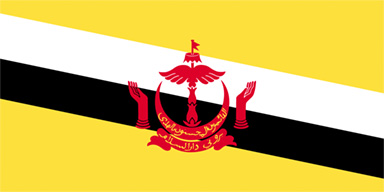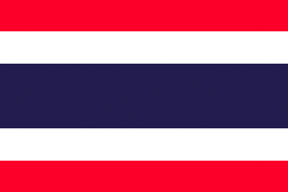
Research: Thailand 01
Bangkok, Chiang Mai
2016.05.06 - 05.13
Several weeks after Songkran, the Thai New Year, the daytime temperature seemed to rise beyond our body temperatures. In the capital city, forests of skyscrapers and its infamous traffic jam accelerated the heat and hot air. As expected, Bangkok’s food, massages, and warm “smiles” made foreigners, such as ourselves, feel very welcomed. This country, however, possesses another face; its continuing military regime, for example. What allowed us to glimpse into the depths and layers of this country was the conversations with and practices by Thai artists born out of the outstanding contemporary art scene that is like no other in Southeast Asia.
-
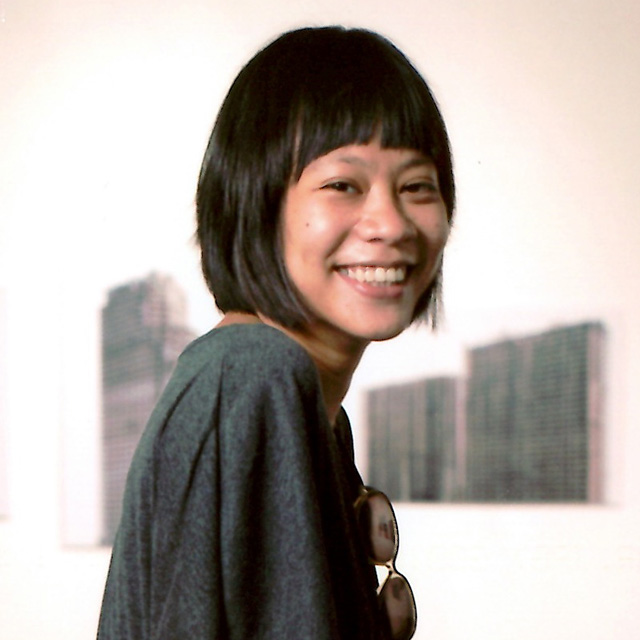 Grace Samboh
Grace Samboh -
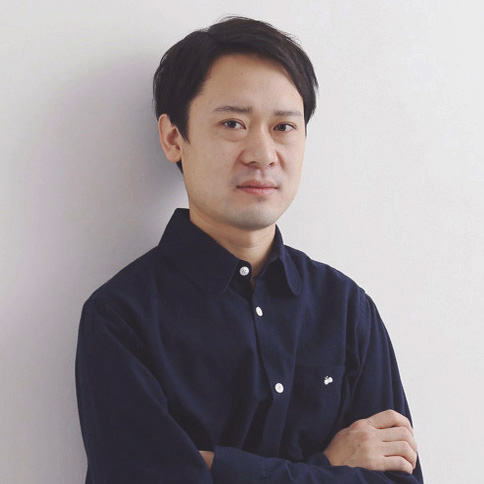 Hirokazu Tokuyama
Hirokazu Tokuyama -
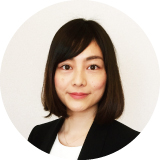 Sayuri Kida
Sayuri Kida -
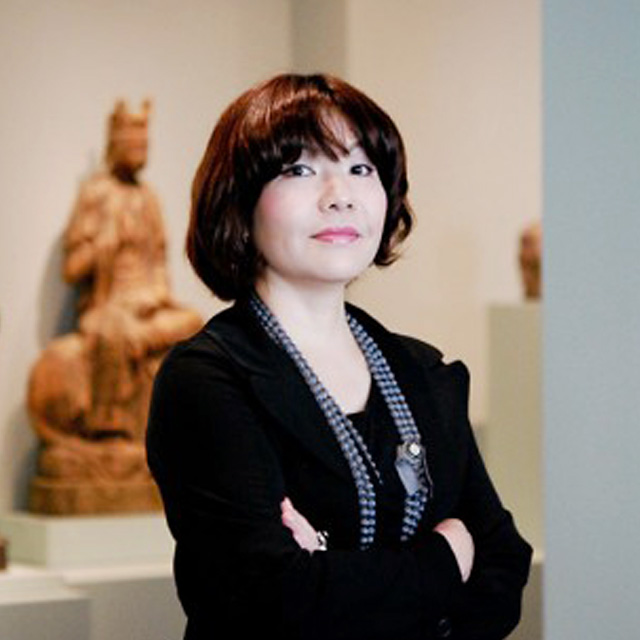 Mami Kataoka
Mami Kataoka -
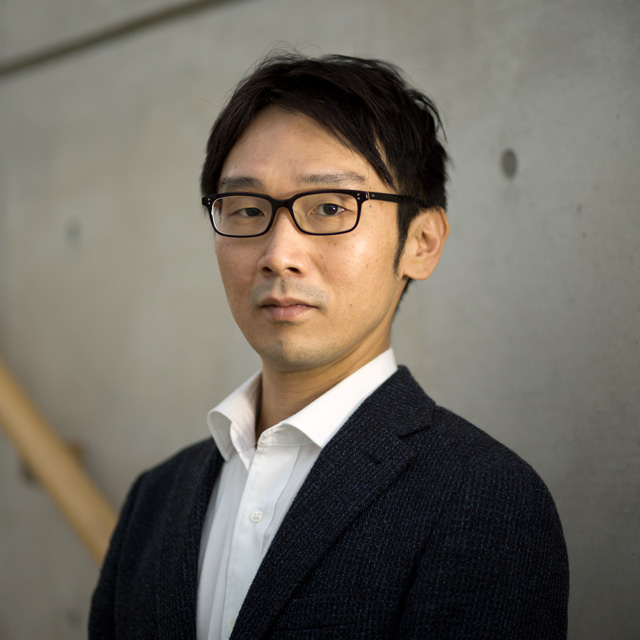 Naoki Yoneda
Naoki Yoneda
The Reading Room
Bangkok
2016.05.06
The Reading Room is a private, non-profit library and archive center in Bangkok that houses approximately 1,000 publications and materials on contemporary art of Thailand and other countries. Established in 2009 by Narawan Pathomvat (1980–), the Reading Room is not merely a library; it is also highly aware of and sensitive to the relationships artistic and cultural practices have vis-à-vis Thai politics, economy, and society which it pursues through hosting film screenings and talk events for artists and those in the art world. In a very private setting with sofas and cushions, this small “reading room” is surely to become one of the valuable spaces to encounter global theories pertaining to contemporary art. The exhibition underway at the time of our visit was one showcasing the work of Chiang Mai-based artist Sutthirat Supaparinya (1973–). The exhibition title, Paradise of the Blind, was taken from the title of a book that is still banned in Vietnam. Som picked up fifty-five books which are banned in the Asian and Oceanian regions, shredded them, and left their remains in a heap on the floor. Suspended above the mountain of shredded books were bullets, sold as souvenirs at military museums, creating a sense of tension in the work.
Bangkok Art & Culture Center (BACC)
Bangkok
2016.05.06
The Bangkok Art & Culture Center (BACC) is a cultural complex established in 2009 after artists strongly appealed the need for such a facility to the government. Curator Pichaya Suphavanij (1972–) kindly showed us around. BACC is a nine-story cylindrical building with a spacious, open atrium. The first to fifth floors of the building are for multipurpose use where art and design shops reside and community projects are held. The art gallery which Pichaya curates is located on the seventh to ninth floors. The art gallery has an exhibit space of 12,000 square meters and it hosts twelve exhibitions a year. The galley’s base budget is provided by the city of Bangkok but it also co-organizes exhibitions which are jointly sponsored with foreign government agencies. Due, in part, to its location in downtown Bangkok, most of the gallery’s visitors are between the ages of twenty-five and thirty-five, and the number of visitors for each exhibition, for an average of a three-month period, is forty to fifty thousand. The exhibitions at the gallery range from retrospective exhibitions for veteran artists, solo exhibitions for mid-career artists, to many thematic exhibitions featuring younger artists. Among its Southeast Asian exhibitions, the gallery hosted Concept Context Contestation: Art and the Collective in Southeast Asia in 2013, which also traveled to Hanoi, Vietnam, and Yogyakarta, Indonesia. At the time of our visit, the Thailand Eye exhibition was held, an exhibition which had returned to Thailand after its time at London’s Saatchi Gallery.
Jim Thompson Art Center
Bangkok
2016.05.06
James Harrison Wilson “Jim” Thompson contributed to the revival of the Thai silk industry as an American businessman in the years after the Second World War. His residence, the design of which incorporates Thailand’s traditional architectural style, is known as the Jim Thompson House and has become a tourist attraction in Bangkok. The Jim Thompson Art Center is located on its grounds, and has been hosting international and, especially, Thai contemporary art exhibitions featuring solo shows of prominent artists such as Apichatpong Weerasethakul (1970–), Montien Boonma (1953–2000), and Pinaree Sanpitak (1961–). Together with these, the Art Center also actively organizes educational programs, conferences, workshops, and publications for a wide range of audiences from professionals to the general public. At the time of our visit, a solo exhibition of Korakrit Arunanondchai (1986–), a Thai artist currently gaining international attention as an artist of the next generation, was being held. One of Korakrit’s representative works involves a series of videos that skillfully fuses popular youth cultures with Thai traditional cultures and myths. This is projected onto a few large screens and he creates an installation where audiences are made to view the piece seated on bleached denim cushions. Jim Thompson Art Center’s Art Director, Gridthiya Gaweewong (1964–), also gave us a lecture on the history of contemporary Thai art. Her views of always connecting the development of contemporary art and art education to their political, social, economic, and cultural contexts was very much relatable.
The Land Foundation
Chiang Mai
2016.05.07
Established primarily by leading Thai artists Rirkrit Tiravanija (1961–) and Kamin Lertchaiprasert (1964–) in 1998, the Land Foundation is an art project, community, and residence located in a rural area approximately 20km southwest of Chiang Mai. This area experiences extreme rainfall in the rainy season making it unsuitable for cultivating rice, and hence it was developed as a combined space for art and agriculture where artists can pursue discussions and their artistic experimentations. In the past, artist Pratchaya Phinthong (1974–) and Copenhagen-based artist group Superflex have worked in residence at the Land, viewing it as a kind of experimental laboratory. Buildings necessary for everyday life on the grounds of the Land plays an important role in this project. Small, two-story sheds, designed by Rirkrit Tiravanija, Thai artist Mit Jai Inn (1960–), and German artist Tobias Rehberger (1966–), encircle the Land’s center. Works produced here from the late 1990s that embody the everyday life of this particular environment are situated, in the history of contemporary art, as embryos of so called project art.
Udomsak Krisanamis (1966–)
Chiang Mai
2016.05.07
Udomsak Krisanamis is a Bangkok-born Thai artist currently based in Chiang Mai. After graduating from Chulalongkorn University, he traveled to the United States to attend the School of Art Institute of Chicago. He then continued his work in New York before moving in 2008 to Chiang Mai, a city where artists gathered. At the beginning of his artistic career, he became well-known for his two-dimensional works where he would paste rice noodles, such as those used in Pad Thai, onto his canvas. In the late 1990s, he began to make collages using newspaper. Crossing out or painting over the words he was familiar with in English newspapers, an irregular geometric pattern would emerge on the newspaper’s surface. Having an affinity for music, he also names his paintings after existing song titles such as How Deep is the Ocean? (Irving Berlin, 1932), and has also used circular motifs on his paintings inspired by the shapes of percussions. Today, Udomsak Krisanamis teaches at Chiang Mai University and displays his works in solo and group exhibitions at distinguished art galleries. In Japan, too, he participated in the Art and Music―Search for New Synesthesia exhibition at the Museum of Contemporary Art Tokyo (2012–2013).
Mai Iam Contemporary Art Museum (MICAM)
Chiang Mai
2016.05.08
The Mai Iam Contemporary Art Museum (MICAM) is a private art gallery in the outskirts of Chiang Mai that was planned to open on July 4, 2016. With 3,000 square meters of floor space, MICAM is the largest contemporary art gallery in Chiang Mai, organizing temporary exhibitions as well as exhibitions of their collection. MICAM’s inaugural exhibition will be Serenity of the Madness (July 4– Sept. 10, 2016), a retrospective of the Chiang Mai-based, globally active hatpong Weerasethakul, curated by Gridthiya Gaweewong of the Jim Thompson Art Center. MICAM was founded by collectors Patsri Bunnag and Jean-Michel Beurdeley who are parents to Eric Bunnag Booth, the current Chairman of the Jim Thompson Art Center. The museum’s name, Mai Iam, features Mai, meaning “new” in Thai (also in “Chiang Mai”) and a part of Eric’s great grand aunt’s name, Jao Jom Iam. Iam was the royal consort to King Rama V, the fifth monarch of Siam under the House of Chakri, and a room is dedicated to her in the museum, introducing her life. As Iam also means “new” in Thai, Mai Iam takes on a double meaning of “brand new.” The reason behind building MICAM in Chiang Mai was the city’s significance as an artistic and cultural alternative to Bangkok. That is to say, many internationally active artists live in Chiang Mai, and there also exists a genealogy of artistic culture, specific to the city, that began with the Chiang Mai Social Installation (CMSI) Project, an outdoor sculpture exhibition, in the 1990s. Chiang Mai also features a strong culture of traditional crafts, and the area in which MICAM is located is famous for its woodworking, silverwork, paper, and umbrella craftsmanship. Chiang Mai is certainly the source of spreading Thailand’s contemporary art scene to the world. Located in such a rich cultural environment, MICAM is a museum I would very much like to revisit after its opening.
Mit Jai Inn (1960–)
Chiang Mai
2016.05.08
Mit Jai Inn can be said to be a pioneer of the Thai contemporary art scene. One the founders of the Chiang Mai Social Installation (CMSI) Project, he is involved in running the Land Foundation started by Rirkrit Tiravanija and is also busy working on political activities. No need for a visa, Mit flew to Vienna while a college student, and he studied there for six years (1987–1992 ) while doing odd jobs, one of which was the assistant of Franz West (1947–2012). During this period, he visited documenta VIII and IX, the Venice Biennales, and other such events, and it was through these experiences that he became interested in artists collectives and socially engaged activities. Thus, after returning to Thailand in 1992, he set up CMSI and Midnight University. Midnight University was a public educational program held outside the institutional walls, shifting its venue from temples, vacant lots, and to bars. It is said that a wide range of participants attended including students, monks, sex workers, and young artists young and old, some of whom were artists Navin Rawanchaikul (1971–), Araya Rasdjarmrearnsook (1957–), and Montien Boonma. University professors and others were invited as lecturers, primarily discussing politics and the like. The Chiang Mai Social Installation Project was founded by artists who felt an antipathy against Bangkok’s dominance as the center of contemporary art and thus of culture in Thailand. The Chiang Mai Social Installation Project was primarily an outdoor sculpture festival intended to situate Chiang Mai—with its rich culture of traditional craftsmanship and a large population of the Yao group, Thailand’s ethnic minority—as Bangkok’s alternative and, furthermore, to distinguish itself from art museums and other white-cubed galleries. Artist Navin Rawanchaikul and curator Gridthiya Gaweewong have become the core members of the Project and have kept it alive since 1995. These activities of Mit’s are the cornerstone of Chiang Mai’s art scene today.
Araya Rasdjarmrearnsook
(1957–)
Chiang Mai
2016.05.09
Araya Rasdjarmrearnsook is a Chiang Mai-based, internationally active artist born in Thailand’s Trat Province. At Chiang Mai University, where she continues to teach, she described her past for us in chronological order. Upon earning her MA (Fine Art) from Silpakorn University, she continued to study woodblock printing at the Hochschule für Bildende Künste Braunschweig (Braunschweig University of Art) with the aid of funding such as the German educational exchange scholarships which led her to produce monochrome woodblock prints that evoke landscapes. It was also after this period that she began to produce films and installation art dealing with themes such as death, gender, and identity, leading to her participation in the 51st Venice Biennale (2005) and documenta XIII (2012). Araya’s most representative works include the Conversation series, in which she converses with silent corpses lying in a cold and barren room, and Two Planets series, where she shows famous works of Western art to rural farmers and villagers, and records the ensuing free discussion about their thoughts on the works. Her works also frequently feature dogs, and, indeed, a great many dogs snuggled up to her when she visited Chiang Mai University. Her works expose the vague and ambiguous boundary between the living and the dead, and humans and animals.
Navin Rawanchaikul (1971-)
Chiang Mai
2016.05.09
Navin Rawanchaikul is a Chiang Mai-born Indian-Thai artist whose grandfather emigrated from the Punjab communities of present-day Pakistan. In 1993, he founded Navin Production Co., Ltd. in Chiang Mai, and since has been vigorously active in a wide variety of genres including sculpture, painting, performance, photography, and film. After graduating with a degree in Art from Chiang Mai University and studying under Montien Boonma, Rawanchaikul participated in the 2nd Asia-Pacific Triennial of Contemporary Art (1996), the 4th Fukuoka Asian Art Show (2009), and the 54th Venice Biennale (2011), and has come to be known for his style which constantly questions the relationship between art and society. During our visit, his large-scale retrospective was taking place in three venues: his father’s store in the Warorot Market, the DC Collection Art Gallery operated by a private collector, and his studio, Navin Productions. The retrospective included works such as music videos featuring his family members, large paintings resembling commemorative photographs of local people in a style reminiscent of a film advertisement billboard, and video installations based on his memories with Boonma. From all of these works, we were able to comprehensively see Thailand’s leading contemporary artist’s engagements.
Bangkok University Gallery (BUG)
Bangkok
2016.05.11
The Bangkok University Gallery (BUG) was founded in 1996 where artist-teacher Nipan Oranniwesna (1962–) served as its first director. Until the Bangkok Art & Culture Center (BACC) opened in 2000, BUG was the only gallery in Thailand that specialized in contemporary art. Today, the gallery is led by Ark Fongsmut (1964–) who studied curation at Goldsmiths, University of London. BUG schedules approximately five exhibitions per year including both solo and group exhibitions, but the recent most notable of these is perhaps the series Brand New Art Project where curators are invited from various Southeast Asian countries to organize exhibitions. In the past, Gridthiya Gaweewong of Thailand’s Jim Thompson Art Center and Ringo Bunoan (1974–) of the Philippines have participated in this exhibition as guest curators. Although the exhibitions focus primarily on Thai artists, Ark Fongsmut explains that there are no restrictions on nationality or age, and that students enrolled in Bangkok University have also participated in the past.
Bangkok CityCity Gallery
Bangkok
2016.05.11
Bangkok CityCity Gallery is a commercial gallery that opened on August 23, 2015, headed by two young individuals, Op Susanna (1978–) and Supamas Phahulo (1980–). The exhibition on display when we visited was Painting with History in a Room Filled with People with Funny Names 3, a solo show by the up-coming Thai artist Korakrit Arunanondchai. Op studied filmmaking in Los Angeles and Supamas studied art history, after which the two assisted artists with their art production, publications, and video productions. A short while later, Op and Supamas developed an interest to acquire their own space and form a business to support artists who interested them. Hence they opened the Bangkok CityCity Gallery. They decided to open a commercial gallery because they could not think of a better business model that enabled them to secure revenues and still pursue working with artists and projects of their interest. They devote themselves entirely to working with the artist for her/his solo exhibition, providing both curatorial and managerial support, spending a good six month for its preparation. This is an approach which they have yet to change. Artists who have had and will have solo exhibitions include Wisut Ponnimit (1976- ), Beejoir (1979–), Kornkrit Jianpinidnan (1975–), Nawapol Thamrongrattanarit (1984–), and CEO Books’ Chris Grisana (1992–). A broad definition of “art” is used by the Gallery and they do not limit their focus to just the contemporary art scene, with artists in a wide variety of genres being represented, including those working in conceptual art, street art, animation, commercial films, and publishing. They explained that their goal is to expand the interests of their audience and thus grow the Thai art scene itself. We look forward to the future of this space with great anticipation.
Daytrip to Ratchaburi
Ratchaburi
2016.05.13
The team had flew back to Tokyo. With curator Anothai Oupkum and artists Shinya Akutagawa (1980–) and Henry Tan (1986–), I went to Ratchaburi to look forward to seeing how art is located within and amongst the community sphere. Within the past year or two, I have been hearing about the growth of interest towards community art practices coming from Ratchaburi. Other than the government-endorsed festival "Art Normal", there is also a residency program ran by Tentacles—a Bangkok-based artist-led initiative—with a local university. I was picked up at the hotel and then we stopped by to pick our friends at Henry’s house.
Our first stop was at Baan Noorg to meet Jiradej (Ji, 1969–) and Pornpilai (Yin, 1968–) Meemalai. The partner is currently running a 365 days project on collaboration with artists from the neighboring countries and their own neighborhood. They are located a bit outskirt of Bangkok city and slightly before Ratchaburi. Like many suburban areas, the place that they live in is surrounded by factories. That also means that many people from neighboring countries migrate there to become labors. Ji and Yin was explaining how some people don't even need to learn Thai language because there are so many people that also come from where they come from. People can basically survive speaking Burmese or Malay.
I was surprised to learn Ji and Yin’s knowledge of Indonesia. Apparently they have been working for quite some years with WAFT Lab, a collective based in Surabaya, East Java. I immediately thought of several keywords: suburban, non-central, peripheral. The SEA Project team met WAFT Lab during our Surabaya visit. They seemed like hardcore noise geeks with an infatuation to design rather than artists. But since they have been around for almost ten years now, I think they somehow represent the character of their place. This is also how I see Ji and Yin’s artistic practice. Their lifetime collaboration does not necessarily need a place or a location, yet they decided to leave the city and work where they are at now. With the freedom from art world trend, they have more space to explore their artistic practice and more time to build long term relationships and engagements with similar practitioners.
Like a lightning to that thought in my mind, Ma Ei (1978–) arrived at Ji and Yin’s house where we were sitting down and conversing. Ma Ei is a performance artist from Myanmar. I once saw her performance in "Undisclosed Territory" (Solo, Indonesia)—a performance festival run by Melati Suryodarmo. She was as surprised to see me there. We said hi. And Ma Ei started telling us how happy she is to come back and work with Ji and Yin.
It was too hot. Even I cannot stand. Haha. We all went out for ice cream nearby. In the ice cream place, Ji and Yin showed a cabinet that had some drawings and photographs. It was one of their projects with the ice cream owner’s family that is considered the first family to process milk into ice cream in the area. Oh, yeah. The factories in that part of Thailand are mostly milk factories. Milking cow farming and the factories. The ice cream was super! They even have ice cream with the flavor of ‘Thai Ice Tea’!
Without Ma Ei, Ji and Yin, we continued to Ratchaburi and went to see the residency project that Tentacles organized. I saw the actual piece of Saksit Khunkitti (1989–) at the basketball field, as well as Pitchaya Ngamcharoen’s (1989–) traces of ants and story of a local dog. It was good to see them well installed and taken care of by the neighborhood.
We then went to the headquarter of "Art Normal". "Art Normal" is a festival invented by Silpathorn Award-winning artist and Ratchaburi local Wasinburee Supanichvoraparch (1971–) that takes over the entire town and fills it with art. They want to blend art into people’s daily lives. They work with people around public spaces and owners of market booths, local shops, restaurants and hair salons. In 2016 they worked at seventeen spaces in collaboration with leading Thai architects such as Duangrit Bunnag (DBALP), Attaporn Kobkongsanti (T.R.O.P.), Nithi Sathapitanon (A49), Vipavee Kunavichayanont (Design for Disaster) and Suriya Ampansirirat (Kyai-Suriya).
We visited all the sites one by one. Each and everyone still have the artworks nicely installed. The owners of the places also happily explained their process in working with each artist. A lot of the forms are not of my preference, but I really appreciate the fact that these people who on day-to-day basis live and use the space actually like the artworks and try to make visitors engage with it.
We dropped by the market to buy snacks before we went back to the city. After crazy amount of traffic, we managed to arrive at the Silpakorn University Gallery that was showing their very last exhibition. I met and conversed with artists Ruangsak Anuwatwimon, Bo Wasinonadh, Eiji Sumi (1970–), Unchalee Anantawat (Speedy Grandma, 1982–) and curator Brian Curtin there. The show that was opening that night is curated by Lyno Vuth (by whom the SEA Project team was guided during our Phnom Penh trip).
*Photo: left
(Left to right)Ma Ei, Jiradej Meemalai, Pornpilai Meemalai, Grace Samboh, Benyatip Tiraviriyapol, Anothai Oupkum at the Baan Norg Headquarter where the collective Ji and Yin works.
*Photo: right
The owner of Sam Larn Kesa Barber telling us the story of his life and showing us his recent pictures of the third customer of the day who gets a free haircut. In collaboration with artist Jessada Tangtrakulwong, barber Songkram Budthwong would take photos of his customers and put them on a board at the back wall for display.
Special Thanks
Akapol Sudasna and Supamas Phahulo
Angkrit Ajchariyasophon
Apichatpong Weerasethakul
Apirak Jianpinidnun
Araya Rasdjarmrearnsook
Ark Fongsmut
Arnont Nongyao
Atikom Mukdaprakor
Be Takerng Pattanopas
Chalarak Rueanchomchoei
Chartchai Suphin
Chulayarnnon Siriphol
Dusadee Huntrakul
Gridthiya Jeab Gaweewong
Grisana Eimeamkamol
Henry Tan
Jakrawal Nilthamrong
Kamin Lertchaiprasert
Kittima Chareeprasit
Kornkrit Jianpinidnan
Michael Shaowanasai
Mit Jai Inn
Miti Ruangkritya
Namfon Udomlertlak
Narawan Pathomvat
Navin Rawanchaikul
Nipan Oranniwesna
Nuttapon Swasdee
Orawan Arunrak
Paphonsak La-or
Pathompon Tesprateep
Pichaya Aime Suphavanij
Pisitakun Kuantalaeng
Pitchaya Ngamcharoen
Piyarat Piyapongwiwat
Pornpilai and Jiradej Meemalai
Prapat Jiwarangsan
Pratchaya Phinthong
Saksit Khunkitti
Santiphap Inkong-ngam
Surajate Tongchua
Surasi Kusolwong
Sutthirat Supaparinya
Tada Hengsapkul
Taiki Saksipit
Tawatchai Puntusawasdi
Thasnai Sethaseree
Torlarp Larpjaroensook
Udomsak Krisanamis
Virada Banjurtrungkajorn
Wit Pimkanchanapong
Research

- The Philippines
- (2015.01.08 - 01.11)
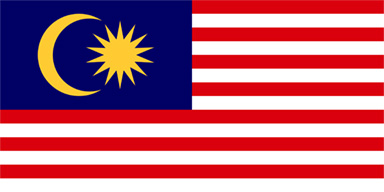
- Malaysia
- (2016.09.27 - 09.28)
- (2015.02.06 - 02.11)
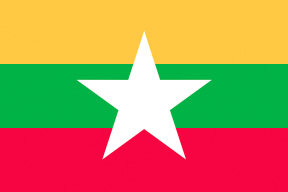
- Myanmar
- (2015.10.24 - 10.29)

- Indonesia
- (2015.11.13 - 11.23)
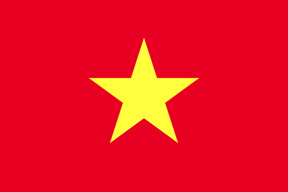
- Vietnam
- (2015.12.13 - 12.20)
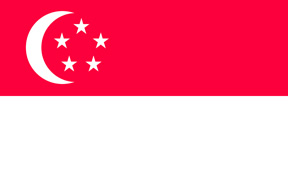
- Singapore
- (2016.11.08 - 11.11)
- (2016.01.21 - 01.23)
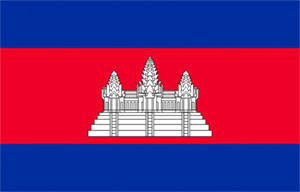
- Cambodia
- (2016.01.24 - 01.26)
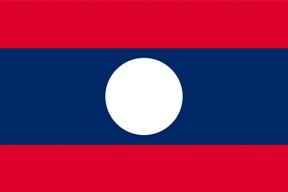
- Laos
- (2016.01.27 - 01.28)

- Thai
- (2016.05.06 - 05.13)
